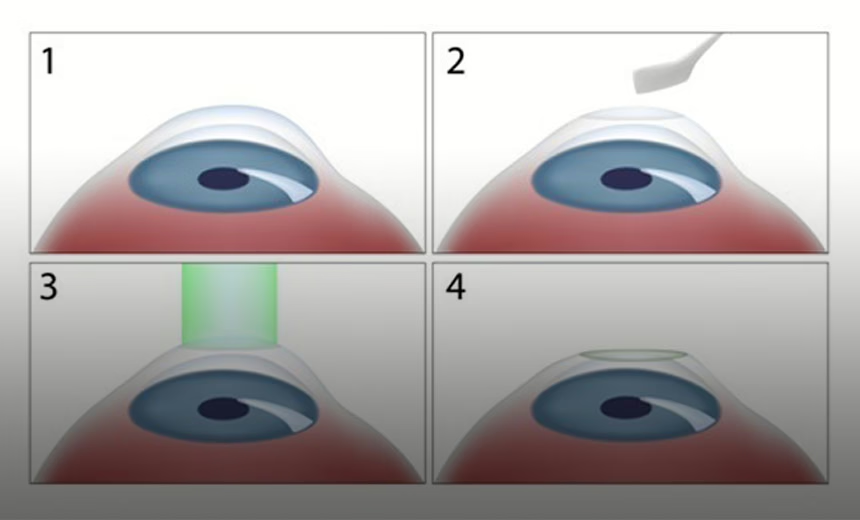Subscribe to eyeMatters periodic news
"*" indicates required fields

ASLA (PRK)

Advanced surface laser ablation (ASLA) is also known as photorefractive keratectomy or PRK and was first performed in Australia in 1991. Although the majority of vision correction procedures performed are now either LASIK or SMILE®, ASLA still plays an important role. LASIK, SMILE and ASLA procedures have different uses and suitability for different patients.
The ASLA procedure only involves one laser – a cool-temperature, ultraviolet excimer laser.
Who it’s used for
ASLA can be used to treat short-sightedness (myopia), long-sightedness (hyperopia) and astigmatism (an imperfection in the eye’s curvature that results in distorted vision).
ASLA may be recommended if you have a thin or unusually shaped cornea or certain dry eye conditions.
The procedure
After being given anaesthetic eye drops and a sedative, you will be escorted into the laser suite and asked to lie down on the surgical bed.
A plastic clamp is placed on your eye, so you can ‘blink’ without actually closing the eye. This isn’t painful or uncomfortable.
Your surgeon will place a few drops of dilute alcohol solution on the surface of the cornea to soften the epithelial cells, before gently removing them. This will expose the smooth regular surface of the cornea underneath. Because your eyes have been numbed beforehand, you won’t feel any pain.
The excimer laser is then used to reshape the cornea and correct your vision. You will need to look at a fixation light, which is simply a spot that allows you to keep focus.
Finally, a therapeutic ‘bandage’ contact lens will be placed on your eyes. You will need to keep this in place for around four to five days, to give your epithelial cells time to regenerate and grow back.
Recovery
Patients should note there is some level of discomfort after the surgery and a slower visual recovery compared to LASIK or SMILE (usually a few weeks). This is because the outermost layer of the cornea is disturbed and takes longer to smooth.
It is recommended that you rest for a few days after surgery. You will be given eye drops to use at home and your eyes will be checked the following day at your post-operative appointment.
Your vision will fluctuate for at least 6 weeks. However, once the corneal cells regenerate, you can expect the same visual benefits as would be achieved with LASIK or SMILE.
Find out more about laser eye surgery.
SMILE® is a registered trademark of Carl Zeiss Meditec
References
- Choice. A guide to laser eye surgery. NSW, 11 August 2020. Available at https://www.choice.com.au/health-and-body/optical-and-hearing/optical/articles/guide-to-laser-eye-surgery [Accessed 6 January 2021].
- Healthdirect. Laser eye surgery. NSW, 2019. Available at https://www.healthdirect.gov.au/laser-eye-surgery [Accessed 6 January 2021].
- Lawless M. Refractive Laser Surgery: Who’s Interested Now? mivision 2019;141:33–37.
- Wilkinson JM, Cozine EW, Kahn AR. Refractive Eye Surgery: Helping Patients Make Informed Decisions About LASIK. Am Fam Physician 2017;95(10):637–44.
- Somani SN, Moshirfar M, Patel BC. Photorefractive Keratectomy. In: StatPearls [Internet]. Treasure Island, FL: StatPearls Publishing; 2020.
The information on this page is general in nature. All medical and surgical procedures have potential benefits and risks. Consult your ophthalmologist for specific medical advice.
Date last reviewed: 2025-10-28 | Date for next review: 2027-10-28
